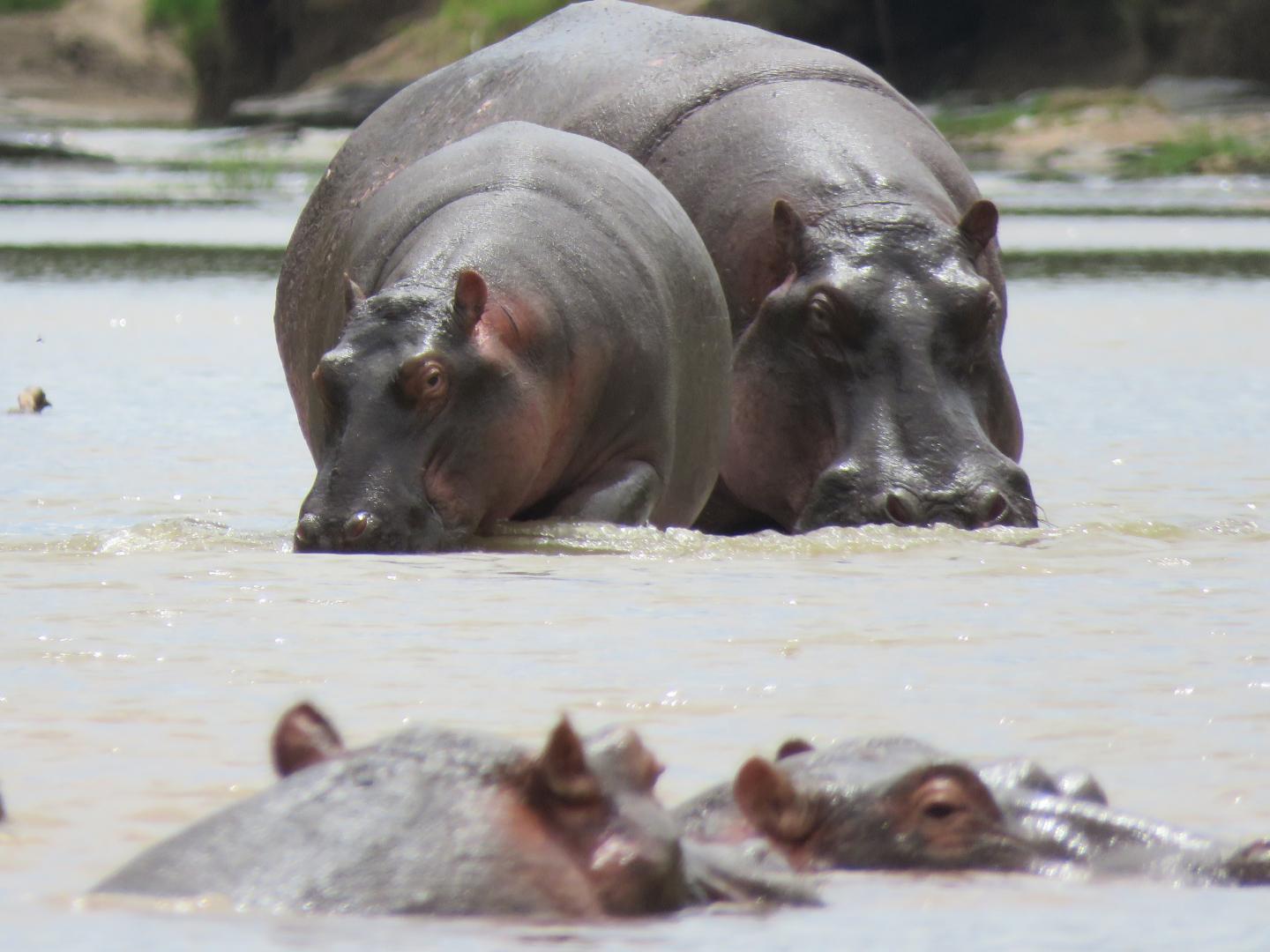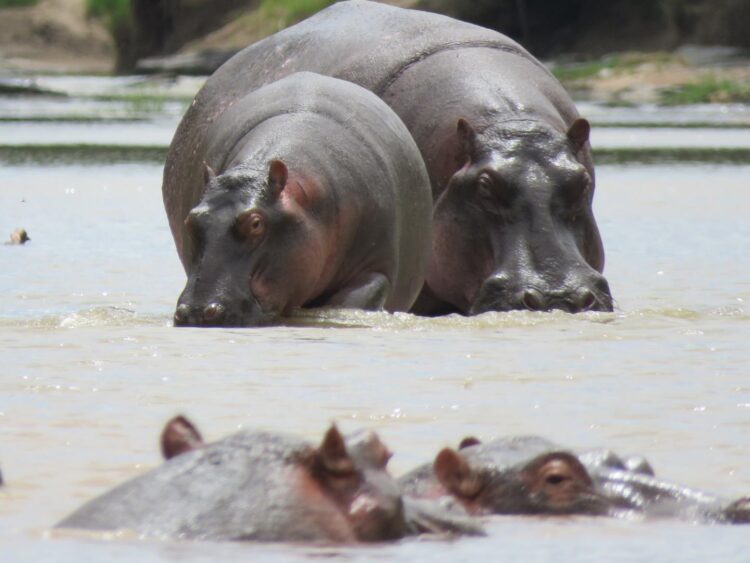
Credit: Gabriel Singer
In many regions of the world, populations of large mammalian herbivores have been displaced by cattle breeding, for example in Kenya the hippos by large herds of cattle. This can change aquatic ecosystems due to significant differences in the amount and type of dung input. Researchers from the University of Eldoret in Kenya, the University of Innsbruck and the Leibniz-Institute of Freshwater Ecology and Inland Fisheries (IGB) have therefore taken a closer look at the dung of hippopotamus and cattle.
Animal dung can pollute water bodies with nutrients and impact water quality and the ecological functions of water bodies. For many aquatic ecosystems, however, the input of organic matter from the surrounding land is part of the natural matter cycling. In temperate latitudes, it is the leaf fall that brings nutrients into water bodies. In the rivers of the African savannah, it is the hippos with their dung. The increasing displacement of hippopotami by herds of cattle is changing the nutrient inputs into water bodies.
Professor Gabriel Singer, Dr. Frank O. Masese and their team investigated the effects of nutrient and carbon inputs from dung on aquatic ecosystems in experiments. The researchers also developed a mathematical model to compare dung inputs from cattle and hippos into the Mara River in Kenya. According to the mathematical simulation, despite lower manure introduction by the individual cattle compared to a hippopotamus, the large number of cattle gives this animal group overwhelming influence.
Cattle dung is more nutritious and stimulates the growth of plants, bacteria and algae
With cattle dung, higher amounts of nutrients such as nitrogen, phosphorus and dissolved organic carbon enter the Mara River. In the experiments, the researchers were able to show that, as a result, more plant biomass is formed with cattle dung. The biomass of bacteria and algae was also higher than with hippopotamus dung. This can change food webs in the river.
“Just the exchange of an animal species that lives on the edge of the river changes the ecological status of the river. Our results show the high species-specific importance of the various large herbivores; they also show how changes in land use or the composition of the species lead to unintended consequences that are not initially the focus of management measures, but which must always be taken into account. Especially with such crucial ecosystems as the waters of the savannah,” Gabriel Singer explains the significance of the investigation.
###
Media Contact
Prof. Dr. Gabriel Singer
[email protected]
Original Source
https:/
Related Journal Article
http://dx.





